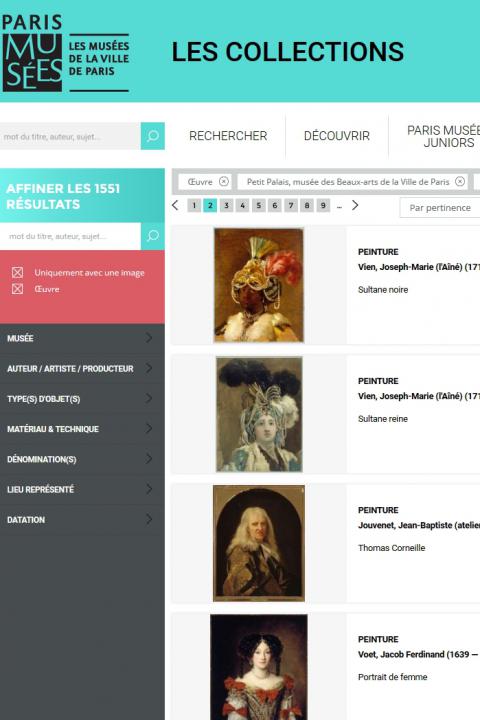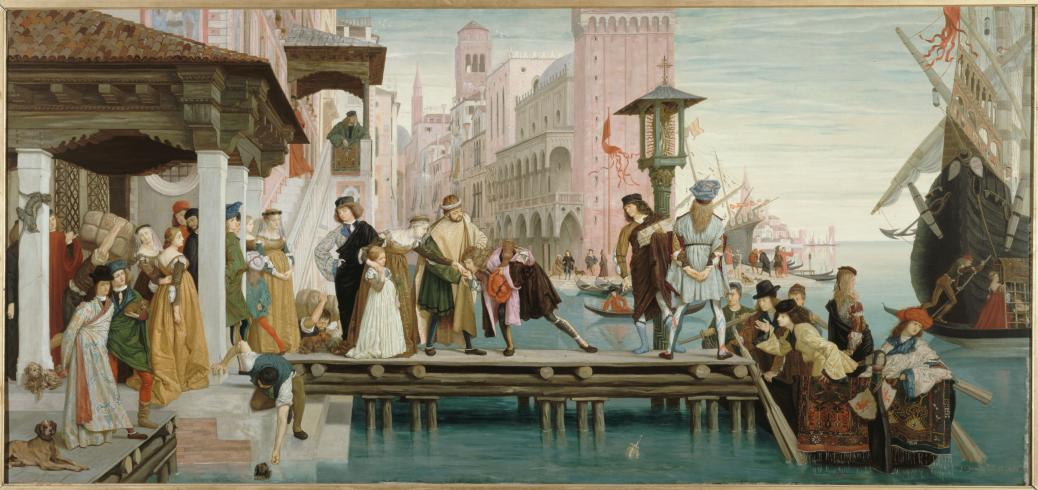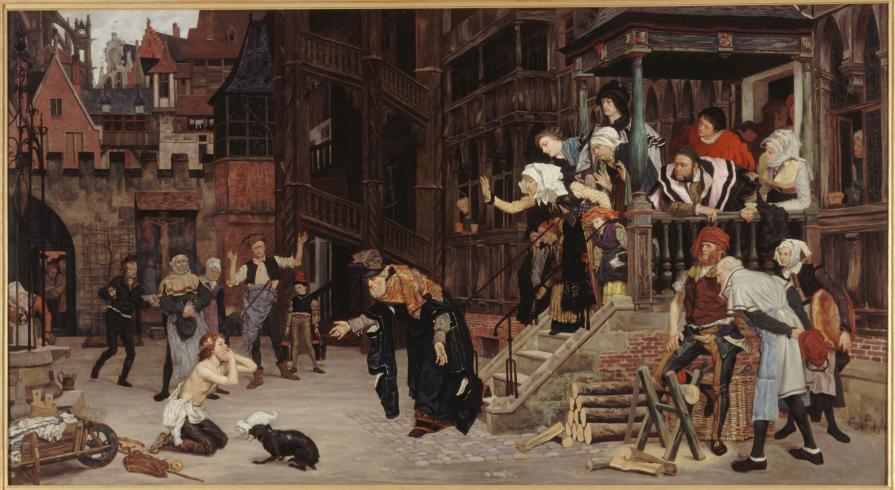Tissot portrays the parable of the prodigal son in the Middle Ages. As a historical painter, he imagines the departure of the prodigal son to 15th-century Venice and his return as a destitute beggar to mediaeval Northern Europe. This mixing of eras was not universally popular.
The gospel of Luke relates the parable of the prodigal son: having claimed his share of inheritance from his father, a son leaves the rich family home. He squanders his inheritance then, struck by famine, decides to return home. His father, seeing him return, welcomes him with kindness. James Tissot has illustrated this story from the New Testament through two paintings depicting the beginning and end of the parable.
Carefully prepared through numerous drawings, these two paintings reveal strong influence by the old masters on Tissot’s style. As he wrote to his friend Edgar Degas: “I’m a follower of Carpaccio, and I’m not about to change”. It was indeed this late 15th-century Venetian painter who provided Tissot with a model for the Departure of the prodigal son. The surrounding buildings and general composition show clear resemblances to the Miracle of the relic of the Real Cross (1494, Venice, Accademia) and the Legend of St Ursula (1500, Venice, Accademia).
For the Return of the Prodigal Son, Tissot took inspiration from the Flemish masters and Nordic architecture. The rich clothing of the figures assembled in the courtyard are reminiscent of the art of Hans Holbein (1497-1544) in The Ambassadors, (1533, London, National Gallery). The buildings in the background of the composition are characteristic of the Flemish architecture of the late Middle Ages, a model which was mainly spread by the neo-Gothic fashion.
However, the unabashed eclecticism in the iconographic and stylistic sources was not to the taste of all the critics. In his report of the Salon, Hector de Callias suggested that Tissot should "look at the calendar" and was amazed that the painter should "set out to imitate Holbein”. Paul Mantz was ironic, and saw in these works the “Apotheosis of curiosity and the triumph of bric-a-brac” (the Gazette des Beaux-Arts).
Paradoxically The return of the prodigal son was better understood when it was exhibited in London. The Royal Society of British Artists exhibited the work in 1864. The English public appreciated the painting for its affinities with the Pre-Raphaelite movement. This first English exhibition encouraged Tissot to subsequently strengthen links with the British artistic world. It was also in London that he found refuge during the events of the Paris Commune.
These two works, exhibited together in the Salon of 1863, were acquired separately by the Petit Palais Museum seven years apart. Reunited again, the canvases allow us to fully understand the effect created by these two historical compositions at the Salon, and understand how they form two chapters of the same story.
H. V. de S.
Discover the Departure of the prodigal son in very high definition thanks to its digitization in gigapixel as part of the Paris Musées Second Canvas project!

City of Paris municipal collection's website
The collections portal can be used to search the collections of Paris’s 14 municipal museums (approximately 336,000 works, including 43,000 belonging to the Petit Palais).
It is also possible to download around 12,000 images of the museum’s works free of charge.
Access the Museums of the City of Paris collections portal
Extern databases
Discover a selection of databases online presenting works from the Petit Palais or documents concerning the history of the museum.


